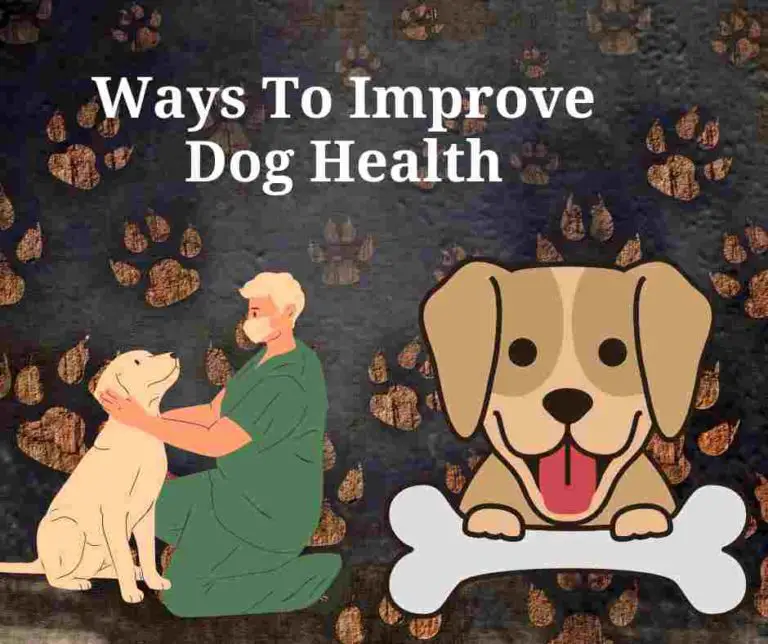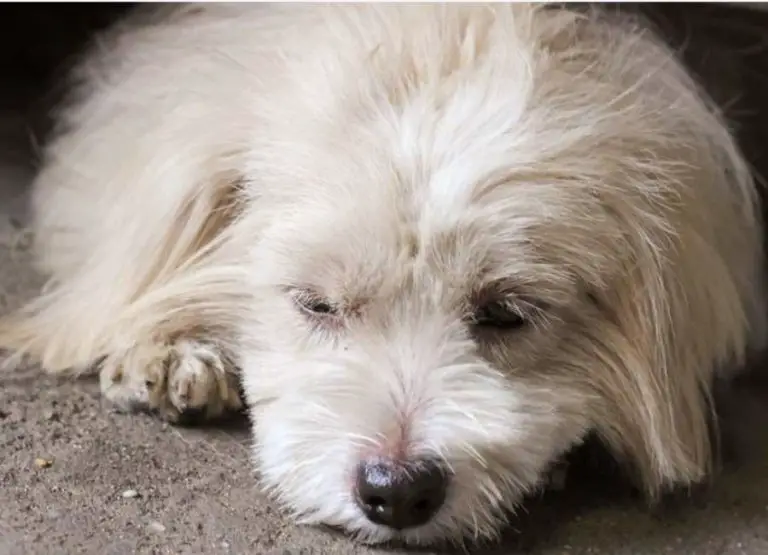Trauma in Dogs [Signs, Causes & Solutions]
![Trauma in Dogs [Signs, Causes & Solutions] Trauma in Dogs](https://petcreeks.com/wp-content/uploads/2023/12/pexels-mikhail-nilov-7469228.jpg)
Today, let’s dive into a topic that’s close to most dog owners and lovers’ hearts: trauma in dogs.
We all know our furry friends can experience difficult and challenging experiences, just like we do.
In this article, we’ll explore the signs, causes, and ways to help our beloved canines overcome past traumas.
So, grab a cup of coffee, and let’s get started!
What is Trauma in Dogs?
Trauma in dogs refers to physical or psychological injuries resulting from a distressing or harmful event to the dog, that can occur from accidents, abuse, neglect, or other traumatic experiences.
Physical trauma may include wounds, fractures, or internal injuries, while psychological trauma can manifest as fear, anxiety, or aggression.
Proper diagnosis and treatment by a veterinarian are crucial in addressing the effects of trauma and promoting the dog’s recovery and well-being.
The Ripple Effect of Trauma on Canine Behavior
So, let’s talk about the ripple effect of trauma on canine behavior. You see when a dog experiences trauma, it can have a lasting impact on their behavior.
This could mean they become fearful, aggressive, or even develop separation anxiety.
It’s like a pebble being dropped into a pond, the effects ripple out and influence various aspects of the dog’s life.
Understanding this ripple effect is crucial for helping these dogs heal and thrive in a loving environment.
By recognizing and addressing the impact of trauma on canine behavior, we can make a positive difference in the lives of these furry friends.
Causes of Trauma in Dogs
![Trauma in Dogs [Signs, Causes & Solutions] Causes of Trauma in Dogs](https://petcreeks.com/wp-content/uploads/2023/12/nima-mohammadi-fU4pfjRgXrI-unsplash.jpg)
Our furry friends can experience trauma just like humans, and it’s important to understand the potential sources. Here are the big ones:
1. Accidents: Dogs can be involved in accidents such as car collisions, falls from heights, or injuries from sharp objects these can lead to trauma. It’s crucial to provide a safe environment for our dogs and to supervise them when they are in potentially hazardous situations. Additionally, training them to respond to commands and using leashes or harnesses can help prevent accidents.
2. Physical abuse: Unfortunately, some dogs experience physical abuse, which can lead to both physical and psychological trauma. This can include beating, kicking, or any form of intentional harm. Signs of physical abuse may include unexplained injuries, flinching or cowering, and aggressive behavior. Reporting any suspected abuse to the appropriate authorities is essential to protect the well-being of the dog.
3. Neglect: Dogs require basic care, including access to fresh water, nutritious food, regular exercise, and social interaction. Neglecting these needs can lead to physical and emotional trauma. It’s important for dog owners to prioritize the well-being of their pets and ensure that they receive the care and attention they need to thrive.
4. Natural disasters: Dogs can experience trauma from natural disasters such as earthquakes, floods, or wildfires. The sudden and chaotic nature of these events can cause distress and anxiety in dogs. It’s important to have a plan in place to keep pets safe during such emergencies, including having a pet emergency kit and identifying pet-friendly shelters or accommodations.
5. Illness or injury: Dealing with a serious illness or injury can be traumatic for dogs. They may experience pain, discomfort, and anxiety related to medical treatments or recovery. Providing comfort, veterinary care, and a supportive environment can help dogs cope with the challenges of illness or injury.
6. Changes in environment: Dogs can be sensitive to changes in their environment, such as moving to a new home, being rehomed, or experiencing significant disruptions in their routine. These changes can cause stress and anxiety, leading to potential trauma. Gradual transitions, familiar items from the previous environment, and maintaining a consistent routine can help dogs adapt to new surroundings.
7. Fear-based trauma: Dogs can experience fear-based trauma from loud noises such as thunderstorms, fireworks, or other sources of sudden, intense sounds. Trauma can also result from witnessing aggression, violence, or other threatening situations. Providing a safe and comforting environment during fearful events and using positive reinforcement techniques can help dogs manage their fear and anxiety.
Understanding the potential causes of trauma in dogs enables us to take proactive steps to prevent and address these issues.
Signs of Trauma in Dogs
![Trauma in Dogs [Signs, Causes & Solutions] Signs of Trauma in Dogs](https://petcreeks.com/wp-content/uploads/2023/12/elin-wahlqvist-vJciCiSfWoY-unsplash.jpg)
These signs can help you understand if your furry friend might be experiencing some form of trauma:
1. Clinginess: When a dog is traumatized, they may exhibit clingy behavior as a way to seek comfort and security. This can involve constantly staying by their owner’s side, reluctance to be alone, or even following their owner from room to room. It’s important to provide reassurance and a sense of safety for the dog during these times.
2. Sudden Aggression: Trauma can trigger sudden aggressive behavior in dogs. This aggression may be directed towards people, other animals, or even specific objects. It’s essential to identify the root cause of the aggression and seek professional help to address the underlying trauma.
3. Depression: Dogs, like humans, can experience depression as a result of trauma. Signs of depression in dogs include decreased interest in activities, changes in appetite, excessive sleeping, and overall lethargy. Providing a stable and comforting environment is crucial to help the dog overcome this state.
4. Hyperawareness: Traumatized dogs can become hyperaware of their surroundings, often being in a constant state of alertness. This can lead to behaviors such as excessive barking, restlessness, and being easily startled. Creating a calm and predictable environment can help reduce their hypervigilance.
5. Avoidance: Dogs may try to avoid situations or stimuli that remind them of the traumatic experience. This can lead to behaviors such as hiding, cowering, or attempting to escape from the perceived threat. It’s important to be patient and not force the dog into situations that cause them distress.
6. Fear urination: Fear-induced urination can occur when a dog is exposed to triggers that remind them of a traumatic event. This is a common response in traumatized dogs and should be addressed with patience and positive reinforcement to help the dog feel safe and secure.
7. Physical symptoms: Trauma can manifest in various physical symptoms in dogs. These may include a tucked tail, flattened ears, panting, trembling, or a hunched posture. Understanding these physical cues can help in recognizing when a dog is feeling distressed and requires support and reassurance.
Learn more about the signs of trauma in dogs.
Healing Approaches for Traumatized Dogs
![Trauma in Dogs [Signs, Causes & Solutions] Healing Approaches for Traumatized Dogs](https://petcreeks.com/wp-content/uploads/2023/12/doug-morris-8Nn_inn-GZw-unsplash.jpg)
Here are some of the most common healing approaches for trauma in dogs:
1. Combine Massage or Aromatherapy
Massage is a wonderful way to provide physical and emotional support to traumatized dogs. Just like humans, dogs can benefit from the calming and stress-relieving effects of gentle touch.
Massaging your dog can help release tension, promote relaxation, and build trust. It’s important to start slowly and observe your dog’s response to ensure they are comfortable with the touch.
Aromatherapy, on the other hand, involves using essential oils to create a calming environment for your dog. Certain scents like lavender, chamomile, or bergamot are known to have a soothing effect on dogs.
You can use a diffuser or dilute the essential oils with a carrier oil and gently massage your dog to help them relax. It’s crucial to ensure that the essential oils are pet-safe and properly diluted to avoid any adverse reactions.
By combining massage and aromatherapy, you can create a peaceful and nurturing atmosphere that can significantly reduce anxiety and stress in traumatized dogs.
2. Designate a Cozy Spot with their Favorite Things
Creating a safe and comfortable space for your traumatized dog is essential for their healing process.
Designate a specific area in your home, such as a quiet corner or a cozy nook, and fill it with your dog’s favorite toys, blankets, and familiar scents.
You can also include an item that carries your scent, such as an unwashed t-shirt, to provide a sense of security and familiarity.
By having a designated cozy spot, your dog will have a go-to place where they can retreat when they feel overwhelmed or anxious.
This space acts as a sanctuary, offering them a sense of security and comfort, which is crucial for their emotional well-being.
3. Use Counter Conditioning and Desensitization Techniques
Counter conditioning and desensitization are behavior modification techniques that can be incredibly effective in helping traumatized dogs overcome their fears and anxieties.
Counter Conditioning: This technique involves changing your dog’s emotional response to a specific trigger by pairing it with something positive. For example, if your dog is fearful of a certain sound, you can play the sound at a low volume while offering your dog treats, playtime, or affection.
Over time, your dog will start associating the previously scary sound with positive experiences, gradually reducing their fear response.
Desensitization: Desensitization involves gradually exposing your dog to the trigger in a controlled and positive manner. By starting with a very mild version of the trigger and gradually increasing its intensity or proximity, you can help your dog build confidence and resilience.
This gradual exposure can help your dog become less reactive and more comfortable in the presence of the trigger.
4. Establishing a Predictable Routine and Structure
Dogs, like many animals, thrive on routine and predictability. Establishing a consistent daily schedule for feeding, walking, playtime, and rest can provide a sense of stability and security for a traumatized dog.
Knowing what to expect can help reduce anxiety and fear, as the dog learns to anticipate and trust in the structure of their daily life.
This routine can also include consistent cues for activities, such as using the same command or signal for mealtime or walks, to create a sense of familiarity and safety.
5. Positive Reinforcement Galore
Positive reinforcement involves rewarding desired behaviors to encourage their repetition. For a traumatized dog, this approach can be particularly powerful in building confidence and trust.
When the dog exhibits positive behavior, such as approaching a new person or remaining calm during a potentially stressful situation, offering treats, praise, and affection can reinforce the idea that good things happen when they exhibit bravery or calmness.
It’s important to focus on what the dog does right and to be consistent in providing positive reinforcement, as this can help reshape their responses to challenging situations.
6. Combine Spending More Time and Play Therapy
Spending quality time with a traumatized dog is essential for their emotional healing.
Engaging in activities such as play therapy, where you interact with the dog through games and positive interactions, can help build trust and create positive associations.
Playtime provides an opportunity for the dog to release energy, build confidence, and strengthen the bond with their human companion.
Through interactive play, the dog can learn to relax, have fun, and feel safe in the presence of their caregiver, ultimately contributing to their overall emotional well-being.
7. Using Soothing Music Therapy
Soothing music therapy can be incredibly beneficial for traumatized dogs.
Playing calming music with a slow tempo and gentle melodies can create a serene and comforting atmosphere, helping to reduce stress and anxiety in dogs.
This approach is particularly effective in environments where dogs may feel anxious, such as in shelters or during thunderstorms and fireworks.
The music can have a soothing effect on the dog’s nervous system, promoting relaxation and a sense of security.
It’s important to choose music that is specifically designed for calming animals, as certain frequencies and patterns can have a more significant impact on dogs.
Additionally, introducing music during positive experiences, such as meal times or playtime, can help create positive associations and further aid in the healing process.
8. Talk to a Vet for Medication
Consulting with a veterinarian is crucial when considering medication as a healing approach for traumatized dogs.
Vets can perform a thorough assessment to determine the best course of action based on the dog’s specific needs and circumstances. They can prescribe medications that help manage anxiety, fear, and other symptoms associated with trauma.
Medication should always be administered under the guidance of a veterinarian to ensure the safety and well-being of the dog.
The vet will consider factors such as the dog’s overall health, any preexisting conditions, and potential interactions with other medications.
Additionally, they can provide guidance on the appropriate dosage and monitor the dog’s response to the medication over time.
By combining these approaches, you can create a holistic healing plan tailored to your dog’s unique needs, helping them on their journey to recovery and well-being.
Preventing Trauma in Dogs
From my years of experience living with dogs, preventing trauma in dogs is super important, so here are a few quick tips.
First off, socialization from a young age can help dogs feel more comfortable in different situations, reducing the risk of trauma.
Providing a safe and secure environment at home is key, so they have a place to feel calm and relaxed. Positive reinforcement training methods can build their confidence and reduce anxiety.
Regular exercise and mental stimulation can also help them burn off excess energy and stay happy. Avoiding traumatic experiences like harsh punishment or scary situations is crucial for their well-being.
Lastly, keeping up with regular vet check-ups can catch any potential issues early on. Remember, a happy, healthy pup is a trauma-free pup!
Learn more about head trauma in dogs.
Conclusion
In conclusion, trauma in dogs is a sensitive issue that requires our understanding and support. By recognizing the signs of trauma and providing a safe and nurturing environment, we can help our furry friends heal and thrive. Remember, a little love and compassion can go a long way in helping our canine companions overcome their past and build a brighter future.






